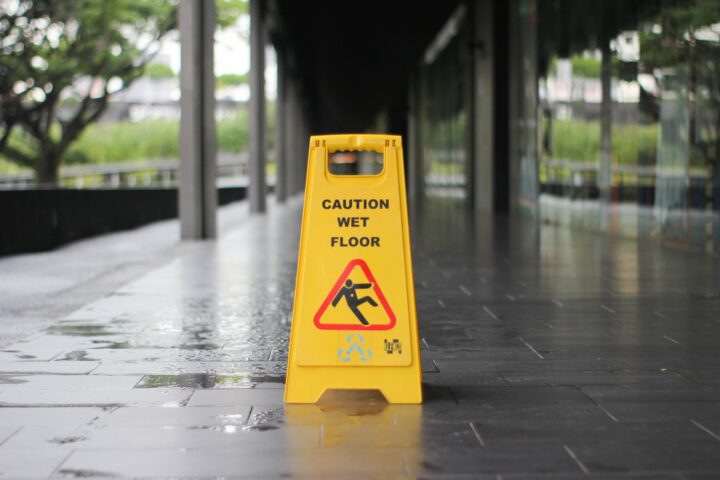Understanding the Dynamics of Slip and Fall Accidents
Slip and fall accidents, often referred to as “premises liability” cases, are incidents where an individual slips, trips or falls due to a hazardous or dangerous condition on someone else’s property. These accidents can occur anywhere – at work, in a shopping mall, on a city sidewalk, or even at a friend or relative’s house.
The consequences can range from minor injuries such as bruises or sprains to severe consequences such as fractures, head injuries, and even fatalities. Slip and fall accidents make up a significant proportion of personal injury and workers’ compensation claims. Understanding the dynamics of these accidents can help individuals avoid potential hazards, and know what to do if such an unfortunate incident occurs.

Seeking Legal Help for Slip and Fall Accidents
In the aftermath of a slip and fall accident, seeking legal help can be crucial. Navigating the legal system can be complex and intimidating for those unfamiliar with its intricacies. A seasoned attorney can help victims understand their rights, determine liability, and seek compensation for their injuries. So head to Demas Law group for example, and ask for a consultation as soon as possible.
The process begins with establishing negligence. In legal terms, negligence is the failure to act reasonably or take necessary precautions to prevent accidents. If the property owner was aware of the hazardous condition but did nothing to rectify it, they could be held liable for the accident.
However, proving negligence isn’t always straightforward. The victim must demonstrate that the property owner knew or should have known about the dangerous condition. They must also show that the property owner had a reasonable amount of time to address the hazard but failed to do so.
Common Causes of Slip and Fall Accidents
Slip and fall accidents can be caused by a variety of factors. Understanding these can help individuals be more aware of their surroundings and potentially avoid hazardous situations.
One common cause is wet or slippery surfaces. This could be due to spills, recent cleaning, weather conditions such as rain or snow, or even a freshly waxed floor. If these conditions aren’t promptly addressed or signposted, they can easily lead to a slip and fall accident.
Another common cause is poor maintenance. This could include cracked or uneven flooring, loose floorboards, potholes, or poorly-maintained stairs. Inadequate lighting can also contribute to slip and fall accidents by making it difficult to see potential hazards.
Steps to Take After a Slip and Fall Accident
If you’ve been involved in a slip and fall accident, there are several steps you should take to protect your health and your legal rights.
First and foremost, seek medical attention. Even if you don’t think you’ve been seriously injured, it’s important to get checked out by a healthcare professional. Some injuries, like concussions, don’t always show symptoms immediately.
Next, report the accident. Whether it occurred at a business, a friend’s house, or a public place, it’s essential to let the property owner or manager know what happened. If the accident occurred in a commercial location, the staff might have a standard accident report for you to fill out.
Keep all documentation related to your accident and injuries. This includes medical records, accident reports, and any receipts for expenses related to your injury. These documents can be crucial if you decide to pursue a legal claim.
The Legal Perspective of Slip and Fall Accidents
From a legal perspective, slip and fall cases can be complex and challenging to navigate. These cases typically fall under the category of personal injury law and are based on the premise that a property owner or manager was negligent in their duty to keep their property safe.
However, determining liability in a slip and fall case isn’t always straightforward. The victim must prove that the property owner either knew or should have known about the hazardous condition, and failed to take appropriate steps to rectify it.
In some cases, the victim may also bear some degree of responsibility for the accident. For example, if the victim was distracted by their phone and didn’t notice a clearly signposted wet floor, they may be considered partially at fault. In these instances, the concept of comparative negligence comes into play, where the compensation awarded may be reduced by the victim’s percentage of fault.
The Medical Impact of Slip and Fall Accidents
The medical impact of slip and fall accidents can be quite significant. Even a seemingly minor fall can result in serious injuries. Common injuries include sprains and strains, fractures, head injuries, and spinal cord injuries. In severe cases, these accidents can result in long-term disability or even death.
The treatment for these injuries can vary greatly depending on their severity. It may include physical therapy, surgery, medication, and in severe cases, ongoing care or rehabilitation.
The emotional and psychological impact of a slip and fall accident shouldn’t be overlooked either. The experience can be traumatic, leading to conditions such as post-traumatic stress disorder, depression, or anxiety. It’s essential to seek appropriate medical and psychological treatment following a slip and fall accident to ensure a comprehensive recovery.
Conclusion
Slip and fall accidents are complex incidents with potential legal, medical, and emotional implications. They can occur due to a variety of factors, and the responsibility can lie with the victim, the property owner, or both.
Understanding the dynamics of slip and fall accidents can help individuals navigate the aftermath of such an incident, from seeking legal help and determining liability to understanding the medical impact and treatment options.
While it’s important to be aware of potential hazards in our surroundings, it’s equally crucial to know what to do if a slip and fall accident occurs. By seeking immediate medical attention, reporting the accident, and retaining all relevant documentation, individuals can protect their health and legal rights following a slip and fall accident.


